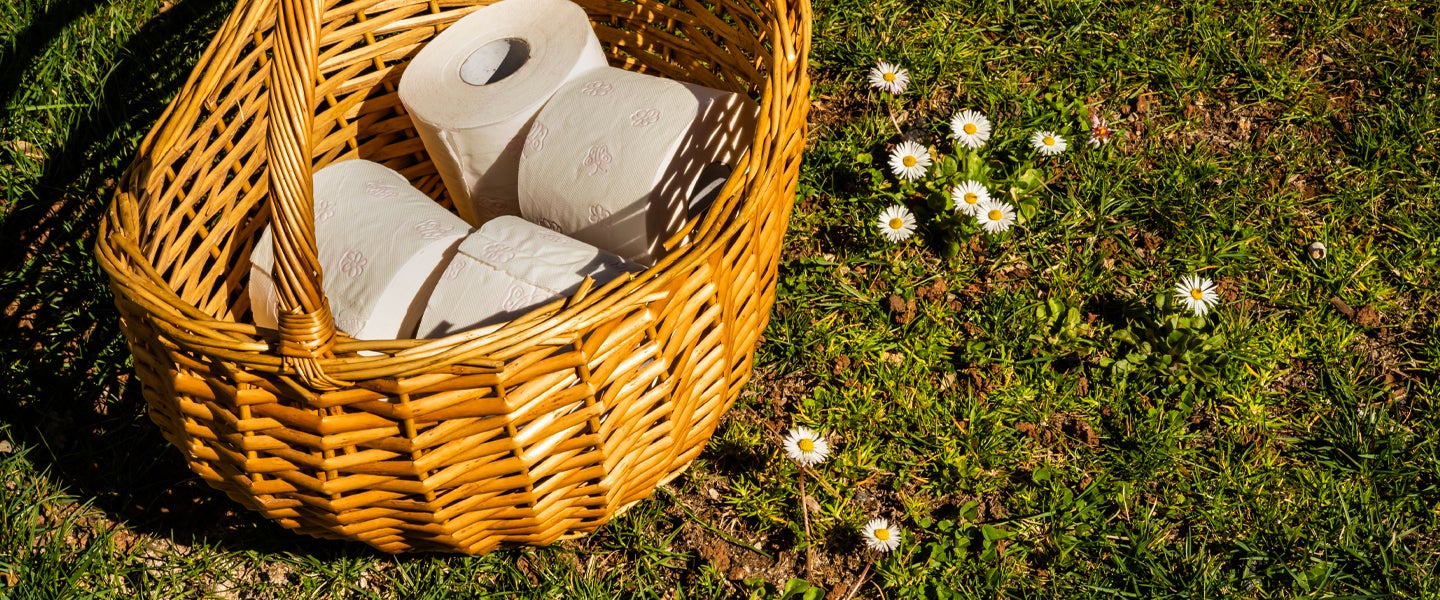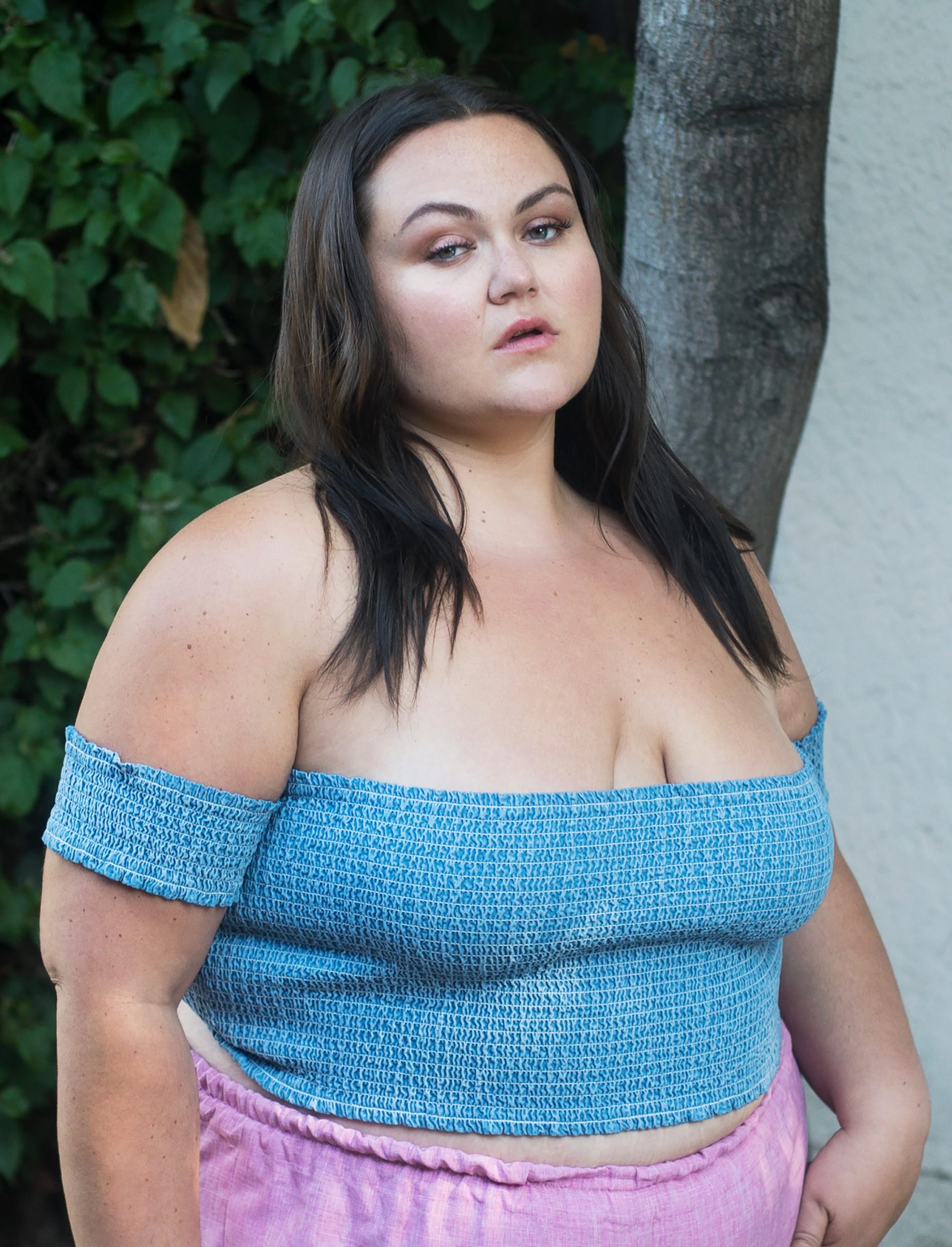To recycle a joke that’s been used before, the state of American toilet paper is pretty shitty. Although toilet paper isn’t the first thing most of us think about when it comes to our individual environmental footprints and sustainability practices, emerging research shows that it should be. Sure, it’s important to use less water, eat less meat and unplug your electronics when you’re not using them. But if you’re also not thinking consciously about what you use to wipe with, you might just be flushing all that eco-consciousness right down the, um, toilet.
One of the key problems with our toilet paper is how infrequently recycled its materials are. In February, the Natural Resources Defense Council (NRDC), an environmental advocacy group in Washington, D.C., released a report entitled “The Issue With Tissue.” It found that while Americans constitute only four percent of the world’s population, we’re responsible for more than 20 percent of global tissue consumption. And since most mainstream brands, such as Charmin, source their material from the forest, National Geographic reports that this results in 27,000 trees getting cut down every day.
Worse yet, “ultra soft” toilet paper requires “virgin timber,” the production of which is a problem from start to finish. Per the “Issue With Tissue” report: “To make pulp using virgin fiber, a pulp mill turns logs into wood chips and sends them through a harsh water and energy-intensive chemical process to remove lignin and other natural adhesives from the wood’s fibers, known as cellulose. Once the cellulose is separated from the other components, it is sent through a chemical bleaching process to whiten the pulp.”
But it doesn’t stop there. The report continues, “Because forests are vital for storing and sequestering carbon, tissue products made from virgin fiber have a substantially higher carbon footprint than those made from other materials. Considering the emissions created when the tissue decomposes, the carbon released from the soil and the loss of continued carbon storage from the degraded forest, creating products using 100 percent virgin fiber generates three times as much carbon as products made from other types of pulp.”
Experts say this is the way 70 to 80 percent of American toilet paper has been made since the Scott brothers developed industrial toilet paper production in 1890 (they’re also the ones who sold us on the idea that toilet paper should come in a roll).
The good news? It doesn’t have to be this way. “Instead of relying on virgin pulp, tissue companies can use recycled content or sustainably sourced alternative fibers such as wheat straw and bamboo,” the NRDC explains. “Use of these materials to create tissue can dramatically reduce our destructive impact on the boreal and other forests around the world. Some companies have already begun incorporating these far more sustainable materials into their products.”
However, not all recycled paper measures up equally, at least in terms of the resources it uses and chemicals it contains. “Recycled toilet paper is better, but it still requires a ton of water to recycle the paper and remove its toxins,” explains Scott Barry, a design entrepreneur best known for his stake in the cult-favorite L.A. eatery Sqirl and who is now lending his visual sensibilities to a bamboo-based toilet paper called Plant Paper. Plus, he adds, “Most recycled toilet paper still uses chlorine and bleach. People bleach toilet paper so it looks clean, but white doesn’t mean your toilet paper is clean. It just means it’s chlorinated or bleached.”
“Before getting involved with Plant Paper,” he continues, “I’d seen bamboo options at the market and thought they sounded like a better idea, but we’re hit with so much green-washing these days. It’s hard to know what someone is trying to sell you based on their idea of what ‘eco’ means. There are other bamboo papers out there, but it can be hard to determine what is actually bleach- and chlorine-free because there are four different descriptions brands use to indicate that. It can get confusing.”
Not to mention, Barry says the deforestation argument regarding toilet paper is tricky because most of the trees that big brands chop were planted specifically for paper-making (a crazy fact most consumers, myself included, surely don’t know). “Toilet paper companies own forests. These forests are specifically grown for toilet paper, and they usually plant four to five trees for every one they cut down,” he tells me. “Still, virgin tree pulp takes a lot more water to soften than bamboo does.”
Additionally, bamboo is believed to be a superior plant material for TP because it has naturally antimicrobial and antibacterial properties, which obviously is in contrast to the bleach and chlorine found in most drugstore paper. “[The process of bleaching toilet paper] leads to the creation of cancer-causing chemicals like dioxins and furans, which not only enter the air but also waterways, soil and the food chain. Exposure to even low levels of dioxins has been linked to hormone alterations, immune system impairments, reduced fertility, birth defects and other reproductive problems,” writes Joseph Mercola, a writer and physician based in Illinois.
The other common ingredients in traditional toilet paper aren’t much better. For example, formaldehyde: It’s intended to strengthen toilet paper while wet, but scientists suggest people who experience chronic vaginal irritation should avoid toilet paper containing it completely. The same goes for BPA, an endocrine disruptor found in lots of toilet paper and paper products in general. BPA can affect hormones and has been linked to cancer, tumors and other adverse developmental effects. (We’ve also written extensively about how wiping your ass with toilet paper isn’t all that effective anyway, generally leaving behind a trail of shit stains, anal fissures and hemorrhoids.)
In terms of his own motivation to disrupt Big TP, Barry says he’s also personally invested in divesting from the politics behind some of the most famous toilet paper companies. “Paper is a huge part of the Koch Brothers business in general. They own stakes in five major toilet paper brands, including Angel Soft and Quilted Northern. So we’re literally putting the conservative agenda in our ass,” Barry explains.
Thus, he considers Plant Paper a remedial step that bridges mainstream American culture’s insistence on using toilet paper with increased environmental consciousness. “Toilet paper is wasteful. Bamboo is better, and maybe a bamboo-hemp blend will be even better in the future. The thing is, though, we don’t need really toilet paper in the first place,” he says.
Florida-based urologist Jamin Brahmbhatt echoes the usefulness of other forms of post-poop sanitation. “In certain parts of the developed and undeveloped world, using water to clean yourself after you have gone number two is quite routine,” he explains. “I go to family homes in India or stay in hotels in Dubai and commonly see what appears to be a second toilet with a faucet where you can go wash your bum, or even a hose next to the toilet seat that can be used to wash down after you’re done. I even know some people who run to the shower after going number two to make sure they’re perfectly clean. Bidets in general are thought to be more environmentally friendly, and water, if you think about it, probably does a better job of cleaning the residual stool out of your anus than dry tissue paper.”
As it turns out, those cute Charmin bears have a grizzlier effect on our asses than I ever imagined.

